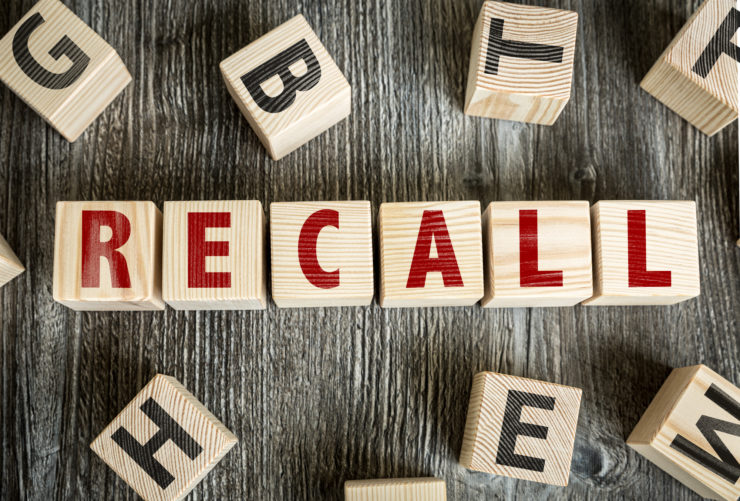
Now that the MAUCRSA transition period is over and full cannabis testing is in the works, we can fully expect California marijuana companies to start engaging in recalls of certain products for a variety of reasons. In fact, a voluntary recall has already been initiated by The Bloom Brand where an impermissible pesticide (Myclobutanil) was present in one of its product batches that made it to retailers. Recalls like this are going to continue to increase, and we have to applaud The Bloom Brand for being conservative when it comes to consumer protection. Hopefully, other companies will follow suit and not try to cut corners where the resulting consequence is undoubtedly litigation, reputational disaster, and even dissolution if not fixed and fixed immediately.
So, what do you do in California if you find yourself inching up towards a recall?
First, you start with the readopted emergency regulations, which lay the field for what has to go down in the event of a recall. The California Department of Public Health-Manufactured Cannabis Safety Branch oversees licensing and enforcement for all manufacturers, and recall protocol is found at section 40268 of the emergency regulations. CDPH is the only agency right now with recall protocol codified in the emergency rules. Specifically, as a condition of licensure, you have to have a recall plan in place. That plan has to include:
(a) Factors which necessitate a recall;
(b) Personnel responsible for implementing the recall procedures; and
(c) Notification protocols, including: (1) A mechanism to notify all customers that have, or could have, obtained the product, including communication and outreach via media, as necessary and appropriate; (2) A mechanism to notify any licensees that supplied or received the recalled product; (3) Instructions to the general public and/or other licensees for the return and/or destruction of recalled product.
Procedures for the collection and destruction of any recalled product also have to meet the following requirements:
(1) All recalled products that are intended to be destroyed must be quarantined for a minimum of 72 hours. The licensee must also affix to the recalled products any bills of lading, shipping manifests, or other similar documents with product information and weight; and
(2) Following the quarantine period, the licensee has to render all recalled cannabis product unusable and unrecognizable and dispose of it in accordance with the rules and law, and that destruction has to take place on video surveillance.
And there are additional waste, destruction, disposal, track and trace and reporting requirements for the recalled product.
MAUCRSA itself empowers CDPH to mandate a recall when:
“the [CDPH] has evidence that a cannabis product is adulterated or misbranded, the department shall notify the manufacturer. [CDPH] may order a manufacturer to immediately cease distribution of a cannabis product and recall the product if [CDPH] determines both of the following: (1) The manufacture, distribution, or sale of the cannabis product creates or poses an immediate and serious threat to human life or health.(2) Other procedures available to [CDPH] to remedy or prevent the occurrence of the situation would result in an unreasonable delay.”
“A peace officer,” including any peace officers from the Bureau of Cannabis Control or CDPH, can also seize product under recall “by any licensing authority” pursuant to MAUCRSA. However, at this point, California’s actual cannabis recall standards are paltry and they’re mostly on a voluntarily basis, which is downright scary given some of the operators in the field.
Every single licensee should, for its own sake and liability mitigation, have concrete standards for recall procedures where products liability means strict liability for everyone in the chain who passed on the dangerous or defective product. Here are some tips of what should go into any reliable recall plan:
1. Create an overall recall strategy that’s going to actually work for the company dependent upon resources and manpower.
2. As part of your recall plan, create definitions and standards for classes of recall and the depth and scope of any given recall. If your state or local laws do not provide basic recall standards for marijuana businesses, check out the FDA’s website under Guidance for Industry: Product Recalls, Including Removals and Corrections.
3. Appoint a recall committee within your company, to be led by experienced personnel capable of evaluating and investigating product complaints to determine if a recall is warranted. This also entails your developing a product complaint form that will be utilized by customers. It is better to learn about product problems early.
4. Develop a complaint receipt and evaluation method to ensure that your product complaint processing and investigations are logical, efficient, and comprehensive. There are few things worse than receiving product safety complaints and then ignoring them until the situation is out of control.
5. Truly ponder what your product complaint investigation will entail. What facts should the recall committee be seeking to determine if a complaint is valid or if a recall is warranted. What should your recall look like, as based on the facts and circumstances and the threat the product poses to consumers and vendors.
6. Create a distribution list so that your recall committee can quickly and easily identify all affected products and product lots for disposition and potentially destruction. The distribution list should also include the names of all affected consumers and vendors, their contact information, and the dates on which the products were sold to them or consumed by them, and it should also include any side effects, injuries, or illnesses resulting from product use. Time is of the essence here.
EXAMPLE: My law firm had a regional food client that inadvertently failed to issue a recall notice to one of many supermarket chains to which it sold its food. This supermarket chain was so angry about having been kept out of the loop that it refused ever to purchase our client’s product again. Then other supermarket chains learned of our client’s mistake and they too ceased all of their purchasing. Needless to say, our client company no longer exists. Don’t let this sort of thing happen to you.
7. Institute a method of stock recovery so all tainted product in inventory is effectively quarantined from sale and distribution.
8. Generate your recall notice and be very careful with your wording in how you alert vendors and consumers to the recall. You want to effectively communicate that a product has been affected and how to deal with that, but you also want to minimize whatever liability your product problems may create for the company. On a case by case basis, consideration should also be given to drafting a press release to help the company’s PR. Regular readers know that we seldom state that attorney help is required, but for this, attorney assistance is absolutely required!
9. Make sure to as quickly as possible (preferably in advance) to alert your outside advisors (your lawyers, your insurance broker, etc.) regarding your recall.
10. Set out in your recall plan your options for product disposition. Will you destroy a product? Cleanse and then repurpose it? Lay out your options in your plan now so that you are not scrambling to try to figure out your possible options later, when you have no time to do so.
11. Record everything you do. Document every effort you make and record all your communications with consumers and vendors. If there is a legal action later, you will want to be able to show the court that you took all reasonable steps to ensure consumer safety.
In addition to formulating a solid and reliable recall plan, you also might want to consider conducting a mock recall to ensure your recall systems will work when the real deal occurs. Compliance audits can also be a big help in shoring up loose ends on a recall.
In the world of cannabis product recall, especially in California, licensees need to be very proactive in order to protect themselves. Relying on the state’s thin recall standards isn’t likely enough to protect licensees against an overwhelming liability exposure.























